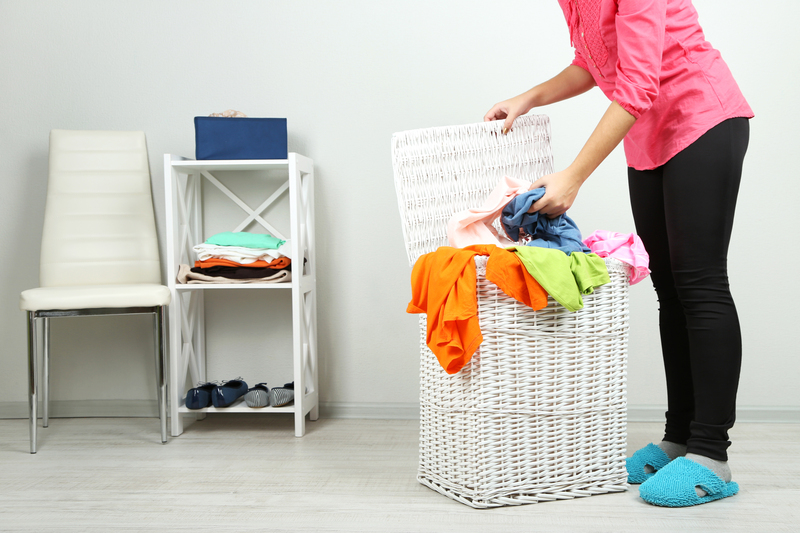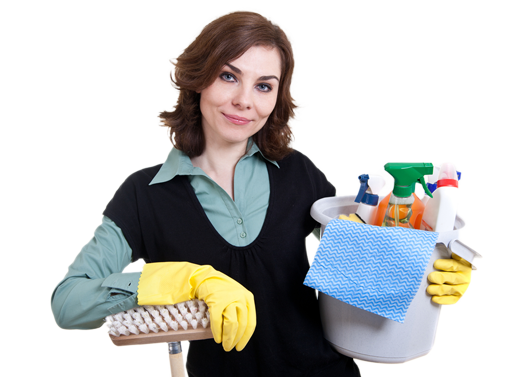Velvet Preservation: Master the Safe Cleaning of Elegant Curtains
Posted on 28/06/2025
Velvet Preservation: Master the Safe Cleaning of Elegant Curtains
Velvet curtains are the epitome of luxury and sophistication, instantly elevating any room's aesthetic with their lush texture and dramatic drape. However, their opulent appearance comes with a caveat: velvet curtain cleaning and preservation require special care to ensure these elegant fabric remains plush, vibrant, and flawless over time. In this comprehensive guide, you'll learn how to master the safe cleaning of elegant velvet curtains using professional techniques and home-friendly tips, so you can continue to enjoy their beauty for years to come.

Why Velvet Curtains Require Special Attention
Velvet is a unique and delicate textile crafted from silk, cotton, polyester, or a blend of synthetic fibers.
- The pile--the raised, short, and dense fibers--gives velvet its characteristic plushness.
- This pile is susceptible to crushing, matting, and moisture damage.
- Improper cleaning can lead to irreversible changes in shape, sheen, and color.
Given these sensitivities, preserving velvet goes beyond simple dusting or washing. A proactive, careful approach is crucial.
Understanding the Types of Velvet Curtains
1. Cotton Velvet
This natural fiber velvet is soft and luxuriously heavy. Cotton velvet wrinkles easily and may shrink or mark with water.
2. Silk Velvet
The most exquisite and delicate, silk velvet curtains offer unparalleled sheen but require expert care and are rarely suitable for home cleaning.
3. Synthetic Velvet (Polyester, Rayon, Nylon)
These blends are more durable, less prone to crushing, and may be labeled "machine-washable." However, they still need gentle, specialized care to avoid velvet damage.
Common Threats to Velvet Curtains
- Dust and airborne particles: Settle in the pile, dulling color.
- Sunlight: Causes fading and weakens fibers.
- Moisture and stains: Water marks, warp, or even mildew may occur if dampness lingers.
- Crushing and matting: Furniture, frequent touching, or improper cleaning methods flatten the pile irreversibly.
Velvet curtain preservation begins with protective daily habits and preventative maintenance.
Velvet Curtain Care: Prevention is Better Than Cure
Regular Maintenance for Velvet Curtains
- Vacuum Weekly: Use an upholstery attachment with soft bristles. Vacuum in the direction of the nap (the direction the fibers naturally lay).
- Avoid Direct Sun: Install sheers or blinds to reduce direct UV exposure, especially for richly colored or silk velvet.
- Prompt Dusting: Use a soft, lint-free cloth or a microfiber duster to gently remove surface dust.
- No Sticky Fingers: Encourage handling curtain edges or tiebacks, not the main panel, to prevent oils and dirt transfer.
Immediate Action on Spills and Stains
- Act fast: Blot (never rub) any spill immediately with a clean, colorless cloth.
- Use minimal moisture: Water can cause marks. Employ dry-cleaning solvent or specialized velvet cleaner sparingly.
- Lift, don't press: For solids or crumbs, gently lift with a soft edge--do not press into the pile.
Master the Safe Cleaning of Velvet Drapes: Step-By-Step Process
1. Check Manufacturer's Label
Before you begin any type of cleaning, always consult the fabric care label. Never assume all velvets are created equal--some may be dry-clean-only, while others allow hand or machine-washing.
2. Remove and Prepare Curtains
- Take down the curtains carefully to avoid extra stress on the fabric.
- Shake out loose dust and lay them flat on a clean surface.
3. Spot Cleaning Velvet Curtains
- Blot the area with a dry cloth to absorb excess moisture or stains.
- Use velvet cleaning solution or mild detergent diluted with water for stains. Apply with a damp (not wet) sponge, working in the direction of the nap.
- Avoid overwetting and do not soak velvet--this can distort the pile.
- Let the area air dry, and then gently brush the nap upright once dry.
4. Steam Cleaning Velvet Drapes
Steaming is one of the safest ways to refresh velvet curtains without full immersion.
- Use a garment steamer, never a hot iron or direct heat.
- Hold the steamer 6-8 inches away from the fabric's surface. Gently sweep in the direction of the pile to lift fibers and remove creases.
- Let dry fully before re-hanging to avoid moisture buildup and flattening.
5. Machine Washing Synthetic Velvet
Only applicable if your care label specifically states "machine washable."
- Turn curtains inside out, place in a mesh laundry bag, or wash separately.
- Use cold water and the delicate cycle with a mild, bleach-free detergent.
- Avoid fabric softeners as they may cling to fibers. Run an extra rinse cycle to remove any soapy residue.
- Air dry flat, never tumble dry. Hanging can stretch out heavy wet velvet.
- Once mostly dry, gently brush fibers in the direction of the nap.
Professional Velvet Curtain Cleaning
For silk velvet or antique drapes, professional dry cleaning is strongly recommended. Expert cleaners use gentle, chemical solvents and specialized equipment to avoid damaging delicate fibers and dyes.
- Request solvent-only cleaning (no water exposure).
- Inquire about experience with luxury textiles.
- If possible, select a cleaner who offers pick-up and delivery to avoid transport mishaps.
Tip: Always inspect your curtains before leaving the cleaner's premises for any signs of shrinkage, color shifts, or pile crushing.
How to Store Velvet Curtains to Preserve Their Beauty
- Clean before storing: Never store dusty or soiled curtains, as dirt may cause permanent staining or attract pests.
- Use cloth bags (not plastic) to allow fabrics to breathe and prevent mildew.
- Lay flat or roll gently--do not fold them sharply, which can create hard-to-remove creases.
- Store in a cool, dry, dark place, away from moisture and sunlight.
Restoring Crushed or Matted Velvet Curtain Pile
- Steam the area lightly to loosen fibers (see "Steam Cleaning Velvet Drapes" above).
- Use a soft velvet brush or a clean, dry toothbrush to groom the nap in its original direction.
- Repeat gently until desired fluff is restored.
Never use excessive force or aggressive brushing, as this can break fibers and worsen the problem.
How Often Should You Clean Velvet Curtains?
- Vacuum or dust: Weekly
- Spot clean: Immediately as needed
- Full deep clean: Every 12-18 months (or per manufacturer instructions)
More frequent cleaning may be necessary in smoke-prone or high-traffic areas, or with pets.
DIY Velvet Curtain Cleaning: Quick Reference Guide
| Velvet Type | Cleaning Method | Precautions |
|---|---|---|
| Silk Velvet | Professional Dry Cleaning Only | Very delicate, avoid water and steam |
| Cotton Velvet | Spot Clean + Gentle Steam + Professional Cleaning | Moderately sensitive, can shrink or lose pile easily |
| Polyester/Synthetic Velvet | Spot Clean + Machine Wash (if labeled) + Steaming | Durable, but avoid heat and aggressive agitation |
Frequently Asked Questions About Velvet Curtain Preservation
Can I Use Water to Clean Velvet Curtains?
*Never saturate velvet with water*--even for durable synthetics, wetting the pile risks water stains and crushing. Use barely-damp cloths and always dry thoroughly.
Is Steam Cleaning Safe for All Types of Velvet?
Steam cleaning is generally safe for cotton and polyester velvet curtains, but avoid direct steam on silk velvet. Always perform a test on an inconspicuous area first.
What Should I Avoid When Cleaning Velvet Drapes?
- No rubbing or scrubbing
- No heat exposure (irons, dryers)
- No soaking or immersion except for labeled machine-washable types
How Can I Keep Velvet Curtains Looking New?
- Regular vacuuming and dusting
- Avoiding direct sunlight
- Promptly addressing stains
- Professional cleaning when in doubt

Summary: Elevate Your Home's Luxury with Preserved Velvet Drapes
With their regal presence, velvet curtains deserve a similarly aristocratic level of care. By following expert guidelines on velvet preservation and safe cleaning techniques, you'll extend the lifespan and appearance of your elegant drapes. Whether your curtains are crafted from sumptuous silk or modern synthetics, adapting your routine to their specific needs will reward you with a home that radiates timeless elegance--all while protecting your investment.
Remember: Treat your drapes gently, approach stains quickly, and don't hesitate to entrust valuable fabrics to professionals. The end result--luminous, plush velvet curtains--will transform your interiors for years to come.
Further Reading and Resources
- Guide to Decorating with Velvet Curtains
- Good Housekeeping's Curtain Cleaning Guide
- Velvet Drapery in Designer Spaces
Velvet preservation is a skill that's well worth mastering. Follow the techniques above and you'll keep your home's most beautiful textiles looking as lush and inviting as the day they were hung.




